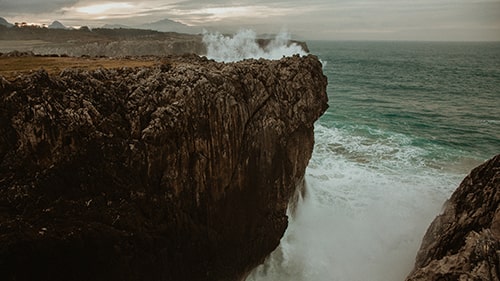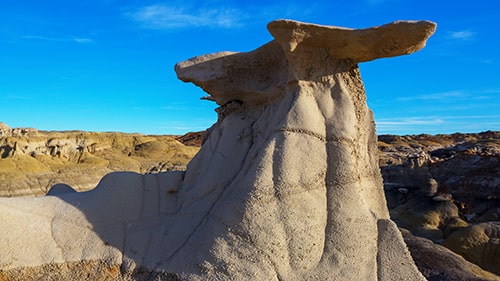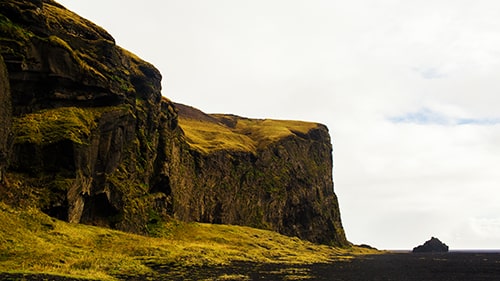what do we mean by "presence"?

in this program
- defining presence
- what gets in the way?
- presence as action
- presence as acceptance of what is here
- presence as nowness
- presence as state
- freedom from identification
- nondual presence
the Oxford dictionary defines “presence” as “the state or fact of existing.” the Cambridge extends this: “presence is also a person’s ability to make his or her character known to others.” Merriam-Webster has it as: “the fact of being in a particular place : the state of being present.”
presence, then, is both my factual existence, as well as my state of consciousness. the latter could present anywhere on a spectrum of non-presence to pure presence. generally, when we speak about being present, we mean full consciousness and being free from the noise of internal dialogue. the state is often associated with a sense of stillness and peace. from what you already know about mindfulness and meditation, you can then see that these two practices cultivate presence. if you have not yet read the programs on practicing mindfulness and meditation, do so, and verify this through experience.

presence is a radical openness to whatever experience is occurring. instead of clinging, stepping away, or becoming aggressive, we allow ourselves to unfold the meaning of the situation and engage in a dialogical inquiry. it is a sensitivity that seeks to understand and be with experience.
what gets in the way?

when we are willing to be present, we tap into direct experience: that is, experience that is not filtered through our thoughts, expectations, hopes, and fears. instead, we see, hear, taste, touch phenomena, and recognize thoughts and images in the mind without adding judgments or preferences. things are just what they are.

Karen K. Wegela

David Richo, writer of How To Be An Adult In Relationship, sees unconditional presence as expressed through attention, acceptance, appreciation, affection, and allowing. he calls these the five A’s of adult relationship. Richo also defines five major mental habits or mindsets that interrupt this unconditional presence:
fear: when we’re worried or fearful of a situation or person, we are defensive, fearing some perceived threat. it is now impossible to be fully present as we are looking for what is confirming our bias.
desire: in a similar way, when we desire a particular outcome or the fulfillment of all our needs, we see others/ the situation from the perspective of getting something from them, and again we lose presence.
judgment: now we have a strong opinion about how things or others should be. this can take the form of admiration, criticism, moralism, labeling, or blame. if judgment is a common mindset for you, you probably have an oversized inner critic.
control: when we are controlling, we want to force our view or plan on someone or a group. we’re identified with a particular outcome and caught in the need to fix, persuade, advise, or change another.
illusion: when we’re caught in fantasy, idealism, denial, projection, or hope, we’re caught in our own illusion. we have a mental picture about another or the situation, and this obscures what really is.
it is easy to be deluded into believing we are present. but presence means that the mind is operating from a space that does not include any of the distortions or unhelpful states described above. presence can be described in many ways, just like a diamond may have many facets. let’s look into some of the qualities that arise as presence grows and matures.
presence as action
presence is the act of being awake to what is. this is not possible if we’re caught in reactivity, defensiveness, or judgment. “what is” is part of my perception, but perception can be clouded by interpretation and projection, that becomes an overlay on “what is.” i see what i want to see, or don’t want to see, rather than simply seeing what is here, right now. it is only when i’m aware of this interpretation or projection that i can see more clearly. the act of presence goes even deeper than being aware of our mental overlay. it involves leaning into the moment’s experience, being open and allowing ourselves to be with what is happening, fully feeling and sensing the experience. it takes courage to be fully present.

clearly, all fear has an element of resistance and a leaning away from the moment. its dynamic is not unlike that of strong desire except that fear leans backward into the last safe moment while desire leans forward toward the next possibility of satisfaction. each lacks presence.

Stephen Levine

we need mindfulness for this leaning in, as well as a basic trust that we have it in ourselves to hold or tolerate our feelings, to stay open to them no matter how frightening they may be. this takes practice and time. when we apply ourselves, we become aware of our lack of awareness, and expand our capacity to be with experience.
mindfulness is our natural state. we are built to pay attention to our reality. over time and through identification we lose this direct attention and become convinced that our self-created reality (interpretation) is really reality. we cling to our beliefs, identifying with thought and feeling, and relating to thought and feeling as if they are real, instead of just thought and feeling (in other words, signals that don’t necessarily reflect reality). we want what makes us feel better and believe that others should be what we want them to be. we regard the willingness to be with discomfort as too difficult, or too much. a simple example is our discomfort when there is silence in a conversation, or in our space. we fill these spaces with talk or media. yet, these gaps of stillness are an invitation into nonconceptual awareness, always self-existing. when we settle into this awareness, we become unconditional presence, just being with what is here. open, interested, and with no agenda. we don’t need to create this presence because it is always there, like the sky within which clouds appear. it is our unconditioned nature, always already present. we have access to it all the time, but we cannot access it via thought. we can only access it in direct experience.
we cannot reach presence by trying to be present, as trying implies being different from what we are. paradoxically, presence happens by itself when we let go. we let go of all the expectations and resistance to what is right now. this “what is,” is accepted as reality, even if it is not the way we want things to be. acceptance makes the moment workable, no matter its content.
presence as acceptance of what is here

when we let go of our battles and open our heart to things as they are, then we come to rest in the present moment. this is the beginning and the end of spiritual practice.

Jack Kornfield

if we want to be present, we have to learn how to befriend emotion; how to be open to it, allow it, and be at the right distance from it. we’ll look more deeply into befriending emotion in the working with emotion section. as a basic and powerful method, we can use the process of Focusing, as made popular by Eugene Gendlin back in the seventies. it is still a landmark practice, and you can easily find more information about it on the web.
the basic process involves seeing the emotion as an entity in its own right, with its own behavior and need. emotions are like things or people that we have respect for. the process, then, is to befriend the emotion through getting to know it, deeply. we can ask ourselves questions like:
- if the emotion was or had a color, what color would it be?
- if it had a shape, what would that be?
- if it had a texture, how would we present this?
- what is its nature? (pulsing, abrasive, stabbing, dead and dull, etc.)
- how does it behave? (what makes it feel worse, and what allows it to simply be?)
ask the questions again and again, letting yourself really touch and know the experience of the emotion. become familiar with the emotion, from a distance, where you are the observer or the witness of the emotion. relax with it and breathe into it if necessary (if it feels overwhelming). allow yourself to explore it fully in terms of its characteristics. you want to be able to recognize it more easily next time, through recognizing its sensations, and be a little more secure in how to be with it.
when you feel you’ve explored fully, imagine the emotion standing in front of you. give yourself time to build the imagined entity.
what does it need from you?
what does it say to you?
what is its gift for you?
Focusing involves an attentive, deep, and respectful looking into our emotion, being aware of all nuances as the feeling unfolds. this often leads to not only a release of the emotion but also a sense of having shifted: an insight.
if we work with emotion in this way, we become much more self-aware and much more able to see subtleties. we come to deeply understand and accept our emotions as our responsibility. we bring home the emotions that have long been banished, and we accept ourselves. we step into relationship with our self. this very presence that we cultivate towards ourselves is the presence that will beam out to others.

reality is continually breaking open our heart by not living up to how we would like it to be. if we can also open to our ‘broken-open heart,’ it has a bittersweet quality. reality never quite fits our fond hopes — that is the bitter taste. the sweetness is that when reality breaks our heart open, we discover a sweet, raw tenderness toward ourselves and the fragile beauty of life as a whole.

John Welwood

presence as nowness

if your mind carries a heavy burden of past, you will experience more of the same. the past perpetuates itself through lack of presence. the quality of your consciousness at this moment is what shapes the future.

Eckhart Tolle

what a powerful sentence: “the quality of your consciousness at this moment is what shapes the future.” reflect on this for a moment. the quality of my consciousness, right now, shapes my future. if i’m not present, i cannot really shape the future. the future simply becomes a repetition of the past.
Lao Tzu first pointed out that when our thoughts are constantly in the past, we’re likely to experience depression. we hanker after yesterday. we resist change. and if our thoughts are constantly in the future, the likely result is anxiety. we see only what can go wrong, making ourselves anxious. happiness exists only in the now. it is only in the now that i have agency, influence, and ability. the now experience is the one that gives me the most current information, and therefore, it is the only place where i can practice and become skillful.

live the actual moment. only this actual moment is life.

Thich Nhat Hahn

being present means being actively engaged with what is going on, right here and now. to be present, i have to get myself out of the position of the thinker, and into the position of the observer. when we observe ourselves, we cannot be in the past or the future. we remain here, present to what is unfolding. yet, when we pay attention to our experience, we notice how difficult it is to stay right here and now. so often, we long for a different experience, and fear the intimacy of this nowness. this now moment can also be very surprising, and this makes us uncomfortable. we don’t want to experience not-knowing, not being able to give an answer or a fix. it can feel deeply challenging to just allow ourselves to be with what is happening right now, in our emotion, thought, and action.

to tap the healing power within us, we first have to let ourselves not know, so that we can make contact with the fresh, living texture of our experience, beyond all our familiar thoughts. then when we express what we are feeling, our words will have real power.

John Welwood

the basic underlying root of all psychological problems is the continual struggle with our experience. we don’t want now. we want the dream of yesterday or the hope of tomorrow instead. we suffer. we have a hard time letting it be as it is. we continually turn away from experience that leaves us feeling discomfort, pain, or anxiety. in a sense, we become disabled, unable to function in aspects of our lives where we’ve never learned to tolerate the experience or the feelings. the only way towards presence is the acceptance of this now and dealing with it intelligently, so that we can learn from our experience.

the past is just a collection of memories. when we dwell upon those memories, we waste the opportunity to act in the Now. the future is just a projection of what we want to happen. when we are projecting, we also waste the opportunity to act in the Now.

Eckhart Tolle

deepening presence
how do we get more deeply into presence? the surface of presence is our perception. all our senses are present in perception. by placing the attention on one or more of the senses, we draw the mind back from thought. you can feel this directly by placing your attention on the sensation of breathing. notice how, as long as you hold the attention on the breathing sensation, mind is free of thought, and conversely, if you catch yourself being lost in thought, you realize that attention has not been with the breathing for that period. we deepen our presence in this way. presence does not need thought in order to know. the knowing is much more direct and immediate. we mostly tend to override this direct perception, or bare attention, with thought and feeling.
now that you can touch presence, practice it in every aspect of your life, whether you’re doing tasks on your own or in communication with another. become aware of yourself as consciousness that is perceiving; a still, open, alert space in which your sense perception occurs. this space does not change, though the objects in it continually change. it is an unconditioned space. you can be rooted in that space and relate to the world from it. it is the vastness to which we’re all connected. remember, presence is a state, not a thought. it is easy to understand this material intellectually, yet have no or little experience of it. presence only exists as experience, and not as thought. make sure that, as you practice with the state, it is a real feeling into and recognition of the state.

meditative experience reveals a different kind of knowing, a direct recognition of thatness or suchness — the vivid, ineffable nowness of reality, as disclosed in the clarity of pure awareness, free from the constraints of conceptual or dualistic fixation.

John Welwood

thinking produces and perpetuates an imagined false separate self or pseudo-self. for most of us, the only time we’re not thinking is when we’re in deep sleep. however, we can choose to be free of thinking. we cannot suppress thought, but we can let it go by placing the attention on a different object. as our ability to be present increases, we are finally able to bring this meditative consciousness into our daily life. when we are present, we are connected with the depths of who we are.
presence is a space beyond or prior to thought, but thinking need not disturb it either. presence is a palpable stillness in the background of consciousness, regardless of the contents of consciousness. the choice we make in practicing presence is to avoid following conceptual mind’s tendency to want to understand or analyze what is happening. instead, we practice the state of non-thinking by becoming more aware of the present moment.
practice seeing and hearing without the interference of concepts and words. allow yourself to know directly and experientially. we can experience this underlying alert presence directly by noticing what is happening interiorly. we notice thought and feeling but choose to maintain the attention on the space in which thought and feeling arise; the source of thinking and feeling, our very Being. when thought arises, we just come back to no-thought. we don’t need to follow the thought, we can recognize it and let it go.
at the heart of us and of the universe is something unchangeable, something that remains constant and aware, unmarred by experience. it is a deeper self with deepening presence. this unchanging presence goes everywhere, allowing for everything that appears within the field of sensitivity we call awareness.
presence as state
we are all familiar with the three major states that we cycle through daily. they are waking (related to the identified self), dreaming (related to the subtle self), and deep dreamless sleep (related to the formless self). it is interesting to reflect on the differences between these three states and selves. our identified or waking self is the one that carries our name. the subtle or dream self has no particular name or location, and it can do things that the identified self is not capable of. your only reference to the formless or deep sleep self may be that you feel refreshed upon waking up in the morning or have the sense “i slept well” though you have no experiential memory of sleeping well. this self has no qualities, no name, no location, and is made of only awareness. we know that awareness remains because a strange sound or sensation can wake us up. the senses are still present, not as things, but as a field of sensitivity. Rupert Spira describes deep sleep: “not as the absence of awareness, but the awareness of absence.” many of us are also aware of states such as altered states, flow states, and the states of mindfulness and meditation. presence is another state, and fortunately it is not some exotic state that we need to discover or manufacture.

in the simplest terms, it is the felt sense of wakefulness, openness, and tenderness that arises when we are fully here and now with our experience.

Tara Brach

in the state of presence, we are the witnessing field of awareness. if you remember the work of Otto Scharmer that we discussed in listening and speaking, you will remember that as our listening and speaking deepens through reflective listening and empathic listening we begin to move beyond the self. in empathic listening our center of attention is outside our own boundary and within the field of the speaker. if our listening and speaking deepens even further, we enter the field of generational listening. we are now not only in contact with others but also with everything within the field of awareness. in fact, there is no sense of self other than this field of awareness. we are awake to our full reality, and we are one with that reality.

inviting and allowing another person to have his or her experience just as it is — this is perhaps the greatest gift anyone can offer.

John Welwood

we can witness in two ways: we are either dispassionate or compassionate. with compassion we look through a loving and caring perspective. we look, and let go, like we’re looking through photos. when we’re dispassionate, or indifferent, we are unmoved. we have no expectation of what is to come, and no sense of appreciation for what is. we simply watch without any interior responsiveness. in compassionate witnessing, we can look without any fixed ideas of how things should be, or what is fitting. we simply respond from our own depth to what is here, now.
as we will see later in the Integral section, our state experience evolves as we mature through stages or levels of broadening perspectives. this means that we can be aware of and allow the maturing of presence, or in other words, the maturing of the witness. in this process, we not only discover more of the qualities of presence, but we also come to know presence as our essential being. what are the characteristics of this presence, or witness? it clearly is not the separate self of body-mind that we usually call “me”, but it sees and listens through me. in direct experience (not thought), it is an incredibly sensitive field of awareness, without any particular form or boundary. it is like the screen on which a movie is projected. everything on the screen changes constantly, but the screen is not in any way affected by these changes. it plays host to all of them, without any preference or need to cling to any particular image or scene. this sensitive field of awareness knows without the need for thought. it knows prior to thought. and it does not belong to you, it is you. it is a more accurate referent for the term “i” than the bodymind or separate self. ultimately, we also let the witness go, and simply abide as pure presence, or non-dual awareness.

you are not in the universe, you are the universe, an intrinsic part of it. ultimately, you are not a person, but a focal point where the universe is becoming conscious of itself. what an amazing miracle.

Eckhart Tolle

freedom from identification

without being aware of it, you take many things as being your identity: your body, your race, your beliefs, your thoughts.

Jack Kornfield

as young children our awareness is essentially open and receptive. only when we reach the teenage stage of development can we really reflect on our experience. prior to the emergence of this reflective capacity the psyche is under the sway of identification. we are dependent on others to help us see and know ourselves. we internalize their reflections, and these coalesce to form the self that appears to others. to be identified means to take ourselves to be a “someone” or “something” that is based on how others or convention relate to us. we become a gender, a bodymind, a role, and a set of characteristics. we lose the connection to our real self and our direct experience. we begin to live in a mental conceptual world rather than the actual world.
identification reduces us to an object, a someone or something, and prevents us from realizing (seeing into) our immediate, feeling-knowing experience as embodied Being; Being in the form of a bodymind. in reality, we are a field of sensitive awareness, never a thing. when we misidentify ourselves as a thing, we become hostage to our own mind and the images we carry of ourselves. we fail to recognize this identified self as the product of conditioning, and believe it to be real and true. the thing we believe ourselves to be becomes the prison we are locked in.

identification is like a glue by which consciousness attaches itself to contents of consciousness — thoughts, feelings, images, beliefs, memories — and assumes with each of them, “that’s me,” or “that represents me.” forming an identity is a way in which consciousness objectifies itself, makes itself an object.

John Welwood

in addition to identifying with a self, we identify with time. we measure everything in units of time, as if time is something that actually exists, rather than a useful but arbitrary concept humans came up with. when we reflect on it deeply, the universe does not exist in time. it is simply this moment in all its quantum glory, changing into the next (right down to the atomic level). an eternal now. every moment contains the same constituents, just differently ordered. there is no measurement, no next moment. there is just what is. and within what is, the human mind has created time. if i say, “i must be present now”, then this “now” has already changed. presence moves us beyond thought, beyond an identified self, and beyond time.

if we take eternity to mean not infinite temporal duration but timelessness, then eternal life belongs to those who live in the present.

Ludwig Wittgenstein

what happens in those moments when you hold a newborn’s hand, or you fall in love, or you’re watching a beautiful sunset? time stops, doesn’t it? there is just raw experience, direct knowing of the most subtle experience. time is created by the perceiver’s mind. it is projected from us, rather than existing in itself. presence is not about being in the moment as if there is another moment. it also does not mean being in this moment in time. presence is about knowing the features of this moment. in awareness there is no time, there is just what is now. presence means that we take ourselves out of time, neither running towards or away from now. presence does not have a sense of “have to” (i have to do this). it is relaxed and receptive with a sense of “get to.” i get to do this. it brings willingness and curiosity whilst maintaining openness. we become the action.

when there is no identification either with the observer or what is observed, awareness remains undisturbed by any divisions, and a new freedom, freshness, clarity, and compassion become available.

John Welwood

in presence we voluntarily let go of identifications. we are aware when they take place (typically as a reaction), and we are able to bring ourselves back to this moment and all the ingredients of its experience. as much as you can, walk around as a field of consciousness, rather than this person wanting this or that. walk in nature and let the trees, flowers and earth connect with you. you can be relaxed and alert at the same time. keep the mind out of thinking and rather focus on connecting. we can step out of the identified self through alert presence, through being connected with the senses and really perceiving, rather than thinking. the way we see the world and others changes radically when we allow this sensitive field of presence, and perceive the constant manifestation of life; the richness and beauty. as we experience this, we can also sense the underlying stillness of presence, and feel this stillness as our own being. we can learn to see and hear life from this depth of our self.
how do i remember these depths when facing challenges? how do i stay in my true self? what effort do i need to make to stay there? the situation is what you are, so you are already there. it does not matter what we do, the depths are already there. you do not need to make any effort other than attention. you may forget, and then you just need to remind yourself. we can simply increase our capacity to access the state by applying attention. each time we do this, we erode the old path of wanting to make an effort. we simply need to feel-know the depth of experience itself, the place of stillness and peace that never changes and that cannot be harmed. underneath all the thought and feeling is the quiet presence of your being. the more we allow ourselves to feel into this space and act from it, the more situations begin to lose their veiling capacity (thought and emotion) and reality becomes easier to recognize.
presence is felt in the heart of experience, each time you make your way back to yourself. gradually, fewer situations have the capacity to pull you away from yourself. we discover that there is something in us that is not overwhelmed. it only quietly witnesses.

pure presence is the realization of being-as-emptiness: being without being something. being is empty, not because it lacks anything, but because it cannot be comprehended in terms of any reference point outside itself… in Nishitani’s words, ‘being is only being if it is one with emptiness… in that sense, emptiness might be called the field of be-ification.’

John Welwood

non-dual presence
we can be aware of our growing presence by reminding ourselves of the spiritual teacher Rupert Spira’s stages of identification/confusion. at the first stage, i experience myself as a separate self amongst other separate selves– a subject in a world of objects. this is the stage of total confusion, as i am fully caught in dualistic fixation. at the second stage, we become more familiar with the state of presence, and our identification (“i am”) shifts to the witness. at this stage, our confusion has been partially resolved, but there is still a subtle duality that remains between the witness and that which is witnessed. when presence matures fully, “i” refers to awareness itself. i no longer experience myself as a separate self or even a witness. i am experience, not a subject who is experiencing or an object that is witnessed. this is the third stage, the dissolving of all confusion.
nondual presence means consciousness without an object. we can describe it in terms of qualities such as depth, luminosity, and spaciousness, yet there is no self-conscious reflection. it is the transcendence (and inclusion) of subject-object duality. one is simply resting in wide open, wakeful awareness, without any attempt to fabricate such an experience. awareness and what appears in awareness naturally become one field of presence.

we are here to practice stepping out of thinking.

Eckhart Tolle

we’ve given up our identification and therefore our self. there is awareness, but there is no need for a self that owns this awareness or this moment. there is just ongoing awareness, and constant appearances of thought, feeling, and sensation, all felt-known in a sensitive, formless field of awareness.
we typically see reality as a twoness. there is you, the seer, and then there is the world, the seen. subject and object. but what is it that beholds? what is it that is aware of the seer and the seen? it is not a “thing” (or an object, in the way that the seer and the seen are objects), but more a place (state) of witnessing, a field of pure presence within which the objects of awareness arise. if you pay attention, you will notice that even you, as an identified self, arise within the space of awareness. you— as a separate self—don’t have awareness, awareness has you. this witnessing space is equally aware of the seer and the seen, and does not see them as separate. the seer becomes the seen. seer, seeing, and seen become one. the twoness exists only in thought; in reasoning, intellectualization, conceptualization, and theorizing. that is the world of dualism. with our thoughts we create a world that is the object, with ourselves as the subject. if we identify with our thinking, then our reality will be dualistic. but if we identify with awareness itself, then we will see, hear, and sense the world very differently.
our conventional divided consciousness (the twoness that we spoke of before —right and wrong, short and long) does not give an accurate portrayal of our experienced reality. we believe that there are short and long sticks. yet, in nature there are not even sticks, let alone long or short. in nature there is just experience, there are no concepts. from the perspective of nature, nothing has a name or a boundary. we fail to see the assumptions and interpretations that our mind employ almost automatically, and that allow for only a distorted view of reality.

divided consciousness — vijnana — can never yield jnana — direct, unmediated knowing, undivided consciousness, self-illuminating awareness, self-existing wisdom. jnana is a different type of self-knowing, primarily discovered through contemplative discipline, where freedom from the subject/object setup allows direct ‘seeing into one’s nature’.”

John Welwood

pure presence includes the realization of self-emptiness: the fact that when i look for a self in my own experience (not in my thinking), all i come across is an empty field of sensitivity, an empty space with no center and no border, within which the fullness of reality appears. i don’t need to be a someone in order to be. the emptiness is not the lack of something, it is the presence of everything. everything appears and disappears, yet the field itself has no birth and no death. it has no outside and no inside, and is made of emptiness, ever-ready to receive whatever appears within awareness. that empty awareness is my true nature and true self. it is also pure presence.
even when our capacity for witnessing becomes highly developed, we can still get caught in thought-reality, the conditioned reality of twoness. we are still subtly biased towards outcomes. for instance, we accept being with emotion because we want a resolution or an understanding. and in witnessing, we are still the witness of something, hence there is still a subtle duality arising from a subtle identification. this subtle identification interferes with the deepest relaxation and letting go necessary to move from personality into pure being. pure presence itself is only discoverable in and through the now experience, in moments when all conceptualizing and striving cease, and we let go of even the subtle identification and duality of the witness.

this pure Presence is not a change of state, not an altered state, not a different state, not a state of peace or calm or bliss (or anger or fear or envy). it is the simple, pure, immediate, present awareness in which all of those states come and go, the opening, or clearing in which they arise, remain, pass; arise, remain, pass…

Ken Wilber


